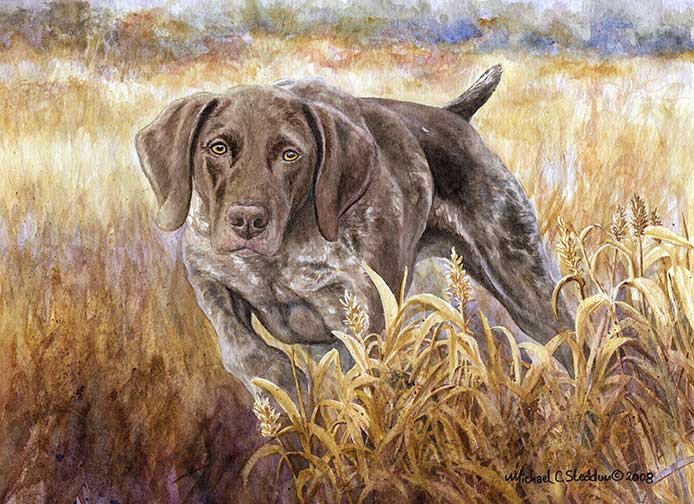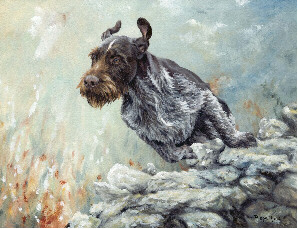
German Wirehaired Pointers are not exact duplicates of their close relative, the German Shorthaired Pointer. They are heavier and slightly taller, and then there’s the whole coat thing. Beyond that, they are still two distinct breeds.

“Hot Wired” by Pippa Thew.Find her work here:http://www.sallymitchell.com/artists/pippa-thew
Both are equally intense. Both have keen noses and drive. Wirehairs handle very cold waterfowling better, while shorthairs do better in warm upland work. Anecdotally, wirehairs are said to be a bit more intense, take themselves more seriously, and may a bit more possessive. Shorthairs are said to have a better sense of humor, are more tractable, if not exuberant, and perhaps are sweeter – but we rely on the actual owners of either to tell us if any of this is true. When German shorthairs were developed in the mid 1800s, the average European hunter needed one dog that could do it all – find and point upland game, retrieve waterfowl, track furred game and running birds, and perform optimally on varied terrain in a range of temperatures. Germans wanted an extra-tough hunter, however, that could work on any kind of game on any kind of terrain, and thus continued to breed the distinctive traits of Pointer, Foxhound, and Poodle until they created today’s German Wirehair, a dog with the trainability of a bird dog, but the relentless determination of a hound.
Top image of “Strike” by Michael Steddum. This print is available at http://michaelsteddum.com/products/strike-a-limited-edition-german-shorthaired-pointer-print
